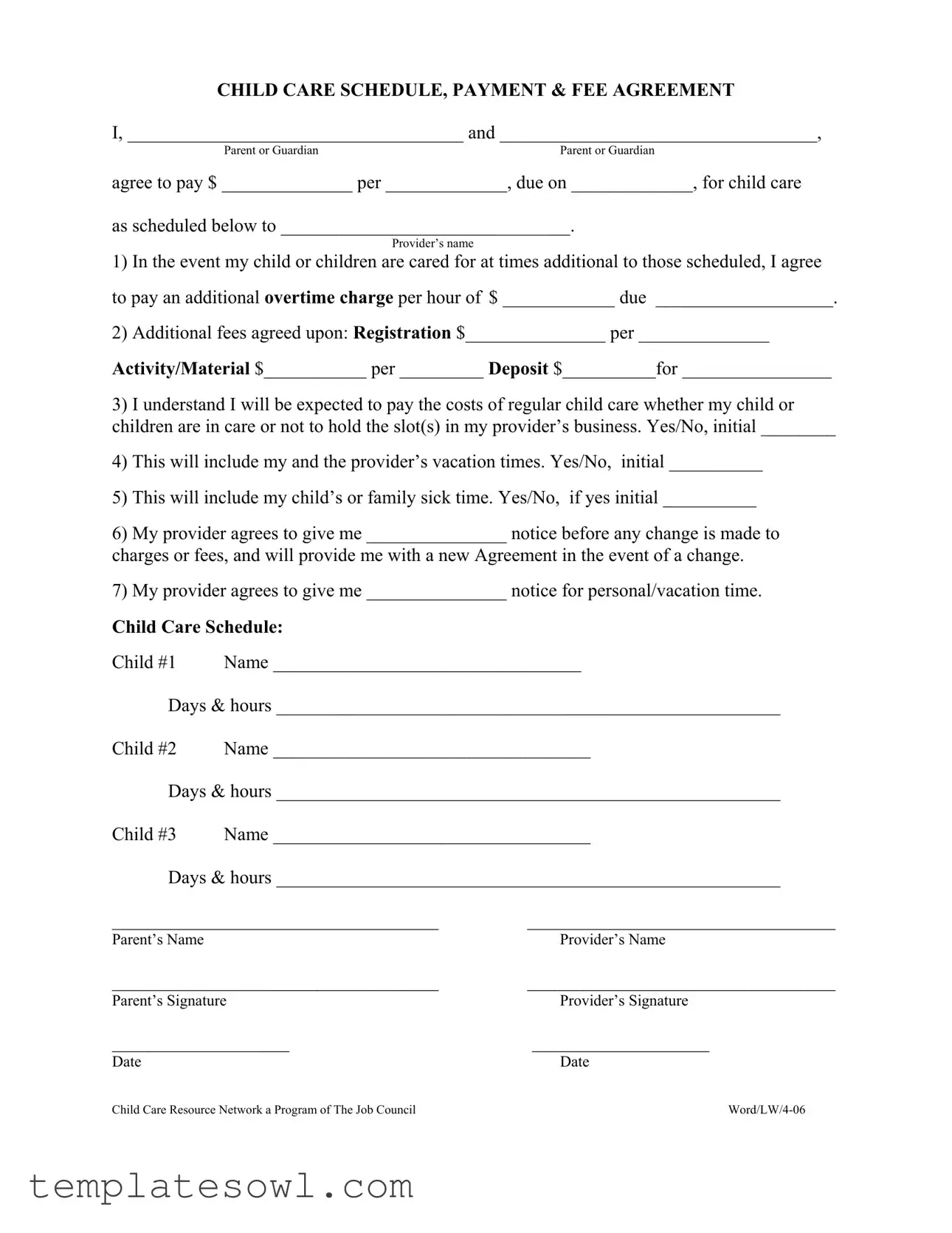What is a Babysitting Contract Sample form?
A Babysitting Contract Sample form serves as a written agreement between a parent or guardian and a childcare provider. It outlines the expectations for childcare services, including payment details, scheduling, and additional fees. This document is fundamental for promoting clear communication and mutual understanding regarding care arrangements.
What information do I need to fill out the contract?
You will need to provide the names of the parent or guardian and the childcare provider, the agreed payment amount, payment frequency, and due date. Additionally, you should specify the children’s names, their scheduled care days and hours, and any additional fee structures for overtime or activities. Make sure to include any specific agreements on registration fees, deposits, and notice periods for changes in services or fees.
What happens if I need to change the childcare schedule?
If changes are necessary, it's important to notify your childcare provider as soon as possible. The contract specifies a notice period that your provider must follow before any adjustments can be made to fees or scheduling. This ensures both parties have time to accommodate the changes effectively and transparently.
Are there fees for additional care beyond the scheduled hours?
Yes, the contract typically includes an overtime charge for any additional hours beyond the agreed-upon schedule. This charge is intended to compensate the provider for their time and resources and should be clearly stated in the agreement. Make sure to confirm the hourly rate to avoid misunderstandings later.
What if my child is sick or I go on vacation?
This contract allows for certain circumstances, such as your child being sick or the family going on vacation, when fees still apply. Ensure you understand how these circumstances affect your payments and confirm with your provider that such arrangements have been agreed upon in advance. You may be required to pay to hold the childcare slot even if care is not utilized during these times.
How do I handle additional fees for activities or materials?
The contract includes a section where any additional fees related to activities or materials can be outlined. It is important for both parties to agree on these fees up front. This way, you can avoid surprises and ensure that the cost of any projects or outings is clear and pre-approved.
What is the purpose of the deposit mentioned in the contract?
A deposit is often required to secure the care slot for your child. It serves as a commitment from the parent to the provider, ensuring that the spot is reserved. The contract should specify the amount and any conditions regarding the deposit, including whether it is refundable or may be applied to future payments.
